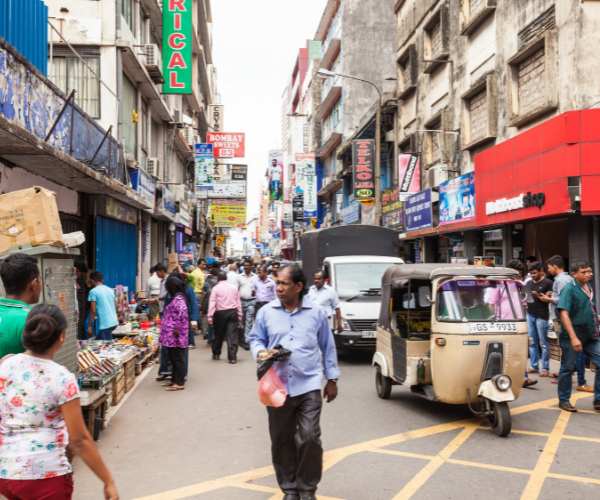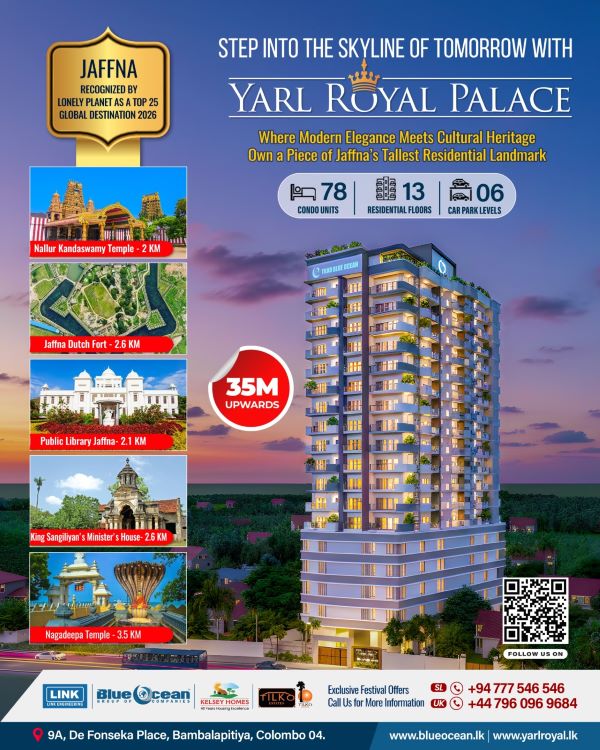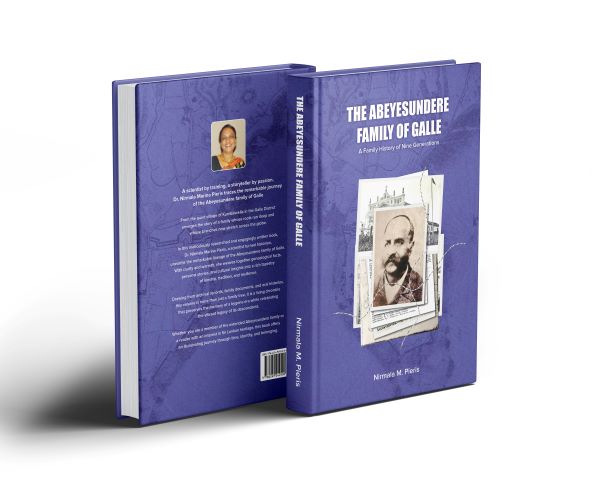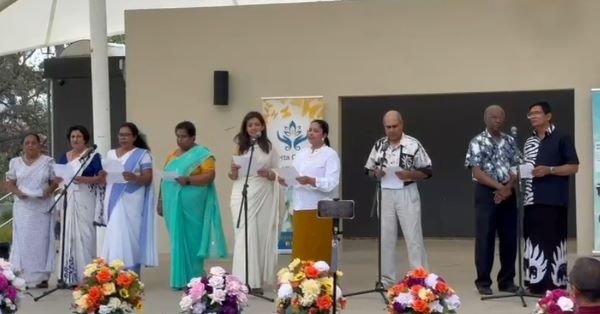Pettah: The Beating Heart of Colombo’s Trade and Culture – By Nadeeka – eLanka
Located in the heart of Sri Lanka’s bustling capital, Pettah stands as more than just a marketplace — it is a vibrant reflection of the island’s diversity, history, and enduring entrepreneurial spirit. Known locally as “Pita Kotuwa,” which translates to “outside the fort,” Pettah sits just beyond the historic walls of Colombo Fort, once a powerful colonial outpost. Over the centuries, this lively district has evolved from a colonial trading hub into a dynamic, multicultural bazaar where tradition and modern commerce blend seamlessly, capturing the essence of everyday life in Colombo.
Today, Pettah stands as a microcosm of Sri Lanka’s economic and cultural landscape — a maze of narrow streets, teeming with traders, vendors, tuk-tuks, and shoppers from every corner of the island. It is where ancient traditions meet modern commerce, and where every turn tells a story.
A Brief Historical Overview
The origins of Pettah trace back to the Portuguese and Dutch colonial periods in the 16th and 17th centuries. When the Dutch established Colombo Fort as their military and administrative center, locals and traders were pushed outside its walls, giving rise to “Pita Kotuwa” — the area beyond the fort. Under British rule, Pettah evolved into a commercial district, attracting Moor, Tamil, Sinhalese, and Burgher traders who set up shops and warehouses along its winding lanes.
Pettah’s multicultural heritage is still evident today. The streets are lined with Hindu temples, mosques, churches, and Buddhist shrines, all coexisting in harmony. This blend of faiths and ethnicities gives Pettah a unique cultural identity unlike anywhere else in Sri Lanka.
A Maze of Streets and Specialties
Pettah is renowned for its organized chaos, where each street or lane specializes in a particular type of trade. Navigating its alleys can be overwhelming for newcomers, but locals know that every road has its purpose.
-
Main Street serves as the spine of Pettah, lined with textile shops offering saris, suiting material, and ready-made garments at unbeatable prices.
-
Second Cross Street is the heart of Sri Lanka’s electronics trade, filled with mobile phone vendors and gadget repair shops.
-
Maliban Street is famous for bags, shoes, and accessories, while Bankshall Street is known for spices and dry goods.
-
Sea Street, one of the most historic lanes, is Sri Lanka’s gold and jewelry hub, dominated by Tamil and Moor jewelers who have traded there for generations.
-
Bastian Mawatha connects Pettah to the bustling bus stand, a transit point for thousands traveling in and out of Colombo every day.
Each of these streets has its rhythm — a symphony of bargaining voices, honking tuk-tuks, and the calls of vendors advertising their wares.
Cultural and Architectural Landmarks
Beyond its commercial significance, Pettah is home to several iconic landmarks that reflect Colombo’s multicultural past.
Khan Clock Tower
Standing tall at the entrance to Pettah, the Khan Clock Tower serves as a symbolic gateway. Built by the Parsi Khan family from Bombay in the early 20th century, it once marked the start of the commercial zone. Today, it remains a beloved landmark and a convenient meeting point for visitors.
Jami Ul-Alfar Mosque (Red Mosque)
Perhaps Pettah’s most photographed attraction, the Jami Ul-Alfar Mosque — also known as the Red Mosque — is a masterpiece of Indo-Saracenic architecture. Completed in 1909, its striking red-and-white patterned minarets dominate the skyline. The mosque not only serves as a place of worship but also stands as a symbol of Pettah’s enduring multicultural harmony.
Old Town Hall
Built in 1873, the Old Town Hall once housed Colombo’s municipal offices. Its colonial architecture offers a glimpse into the city’s past. Today, it functions as a museum featuring historical artifacts and old machinery, offering visitors a window into Colombo’s civic heritage.
A Melting Pot of Cultures and Flavours
Pettah’s diversity extends far beyond its architecture. It is a cultural melting pot, home to Sinhalese, Tamils, Muslims, Burghers, and Malays, all of whom contribute to the area’s dynamic social fabric. This diversity is best experienced through its food — an irresistible fusion of flavors.
Street vendors sell everything from kottu roti and isso wade (prawn fritters) to faluda, samosas, and freshly brewed milk tea. The narrow lanes are filled with the scent of spices, curry leaves, and incense from nearby temples and mosques. Traditional eateries such as Hotel De Plaza or Bombay Sweet House have become culinary institutions, drawing locals and tourists alike.
The Modern Face of Pettah
While Pettah retains its old-world charm, it has also adapted to modern commerce. The Pettah Floating Market, built along Beira Lake, represents a contemporary reimagining of the traditional bazaar. With its clean walkways, scenic water views, and array of shops selling handicrafts, clothing, and snacks, the market provides a more relaxed shopping experience while preserving Pettah’s spirit.
The nearby Fort Railway Station and Bastian Mawatha Bus Terminal make Pettah one of the most accessible locations in Colombo, acting as a transportation hub for the entire island.
Challenges and the Path Forward
Despite its charm, Pettah faces several modern challenges. Overcrowding, congestion, and waste management remain major concerns. The narrow streets, originally designed for carts and pedestrians, now struggle under the weight of vehicles and delivery trucks. However, efforts are underway to modernize the area without erasing its heritage.
Urban renewal projects by the Colombo Municipal Council and Urban Development Authority aim to enhance infrastructure, introduce better waste management, and preserve Pettah’s architectural legacy. The goal is to balance modernization with heritage — ensuring Pettah remains vibrant, yet more sustainable and visitor-friendly.
Why Pettah Matters
Pettah is not merely a shopping district; it is the economic heartbeat of Colombo. Thousands of traders rely on its daily business for their livelihoods, while millions of rupees flow through its wholesale markets every day. It connects rural producers to urban retailers and international buyers — making it a critical link in Sri Lanka’s economic ecosystem.
Culturally, Pettah represents something deeper — a symbol of coexistence and resilience. In a single square kilometer, one can hear Buddhist chants, Islamic calls to prayer, and church bells ringing in harmony. It stands as living proof of Sri Lanka’s pluralistic identity.
Conclusion
In the midst of Colombo’s modernization, Pettah endures — chaotic yet charming, noisy yet full of life. To visit Pettah is to experience Sri Lanka in miniature: a fusion of history, culture, trade, and tradition. It is where the past meets the present, where every scent, sound, and face tells a story of resilience and renewal.
Whether you come to shop for bargains, capture street photography, or simply soak in the atmosphere, Pettah offers an unforgettable experience that engages all your senses. It remains, without doubt, the beating heart of Colombo — timeless, multicultural, and full of soul.























